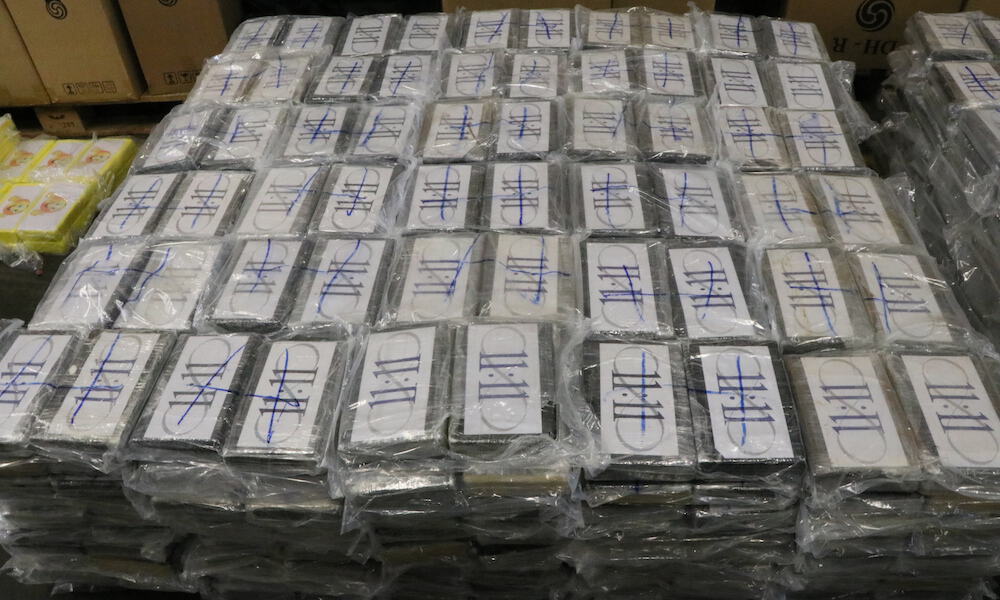More Than One Billion Euros of Cocaine Seized in Historic German Drug Bust
FeaturedTrending Stories August 3, 2019 MJ Shareholders 0

German law enforcement officials are preening their feathers today after the country’s biggest cocaine bust in history. But don’t get too excited, because they also say that the size of the haul means that South American drug cartels are getting ballsier about the quantity of controlled substances they’re smuggling to ports in the region.
“Assuming that this likely high-purity cocaine can be cut to triple the amount for street sale, the 4.5 tonnes has a street value of approximately €1 billion,” wrote the Hamburg customs department in a communiqué on the matter. That’s over a billion US dollars.
The drugs were sent from Montevideo, Uruguay, and hidden in 211 black sports bags that had been packed inside a shipping container and labeled as soybeans. They were uncovered during a routine shipment check.
Agency officials now say that the contraband has been destroyed “amid strict secrecy and extensive security precautions,” and that officials are now concerned with investigating the intended recipients of the container in Antwerp, Belgium.
This is also not the first massive drug bust in what we’ve seen of the summer so far. In Philadelphia, officials seized $1 billion in cocaine off of the MSC Gayane, an amount that totaled some 33,000 pounds of the drug. Employees on the boat told officials that the drugs had been brought to the ship after it left its port in Peru, and before it stopped in Panama. The Coast Guard has announced that it has confiscated $569 million worth of cocaine since May—17,000 pounds of which were discovered in a June 18 video that showed officers in hot pursuit of a semi-submarine.
A spokesperson for the Hamburg customs investigations office said that the high amounts of drugs that agents in the port have discovered are a source of pride for officials. Nonetheless, he estimated that only a quarter of illegal drugs sent to Germany from South America are discovered, which would put the total of cocaine arriving yearly to the port at 30 tons.
Stuffing the cocaine in sports bags is hardly the most creative way the drug has been smuggled into Europe recently. In July, a man was discovered in a Barcelona airport with 1.1 pounds of cocaine tucked under a terribly-fitting toupee.
Many fingers have been pointed when it comes to where the illegal drugs are being passed through. In addition to the Hamburg bust, a plane that arrived in Switzerland with a half ton of cocaine points to Uruguay’s role as a transit point for the narcotics.
A month-long report completed by CNN also points to Venezuela’s position as a smuggling point for drugs destined for the United States. That report suggested that much of the drugs were being produced in Colombia’s Vichada region, which is located close to the country’s long border with Venezuela. In that area, coca agriculture provides some of the only economically viable jobs for residents. A UK Guardian investigation from June explored the ways that the US’ tighter border security was resulting in an uptick of cocaine exports to destination countries in the eastern hemisphere.
MJ Shareholders
MJShareholders.com is the largest dedicated financial network and leading corporate communications firm serving the legal cannabis industry. Our network aims to connect public marijuana companies with these focused cannabis audiences across the US and Canada that are critical for growth: Short and long term cannabis investors Active funding sources Mainstream media Business leaders Cannabis consumers











No comments so far.
Be first to leave comment below.